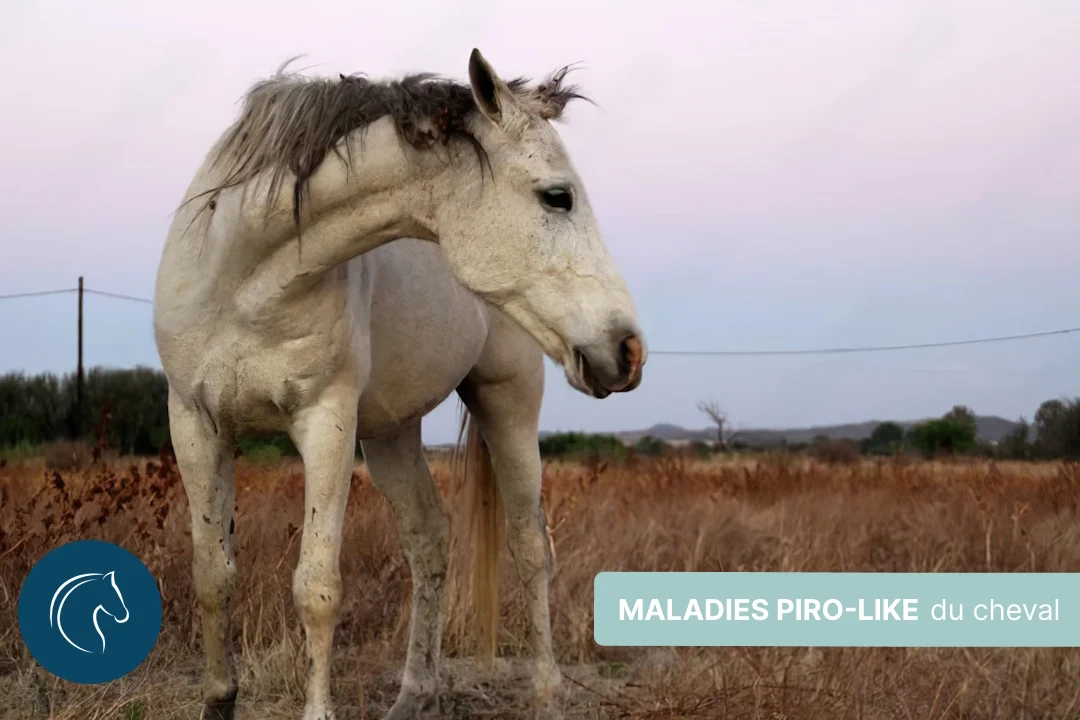Introduction
Piroplasmosis, or equine babesiosis, is a serious parasitic disease caused by two main types of protozoa: Babesia caballi and Theileria equi. These parasites are transmitted to horses by ticks, notably of the Dermacentor and Rhipicephalus genera. Once infected, the horse may present a variety of symptoms, often difficult to distinguish from other equine diseases, making diagnosis a complex task.
The consequences of piroplasmosis
Piroplasmosis can have a wide range of consequences, from mild fatigue to life-threatening complications. In addition to piroplasmosis, other so-called piro-like diseases (such as anaplasmosis and borreliosis) present similar symptoms. These diseases, which are also transmitted by ticks, are a serious threat to horses' health.
Symptoms of piroplasmosis in horses
Clinical signs to watch out for
Piroplasmosis can manifest itself as a combination of various symptoms:
- High fever
- Anemia: destruction of red blood cells, causing pale mucous membranes (gums, eyelids).
- Fatigue and general weakness
- Icterus (jaundice): yellowish tint of the skin and mucous membranes
- Hemoglobinuria: dark red to brown urine with an unusual odor
- Loss of appetite and weight
- Respiratory distress
When these symptoms appear, it's crucial to consult a veterinarian without delay.
Piro-like diseases: Symptoms and diagnosis
Equine anaplasmosis
Caused by Anaplasma phagocytophilum, this disease results in :
- High fever
- Lethargy
- Swelling of the lower limbs
- Ataxia (motor coordination disorders)
Diagnosis is based on blood smears and PCR tests.
Equine Ehrlichiosis
Caused by Ehrlichia risticii, this disease is also transmitted by ticks and can cause :
- Fever
- Severe diarrhea
- Rapid dehydration
Equine borreliosis (Lyme disease)
This disease, caused by Borrelia burgdorferi, leads to :
- Muscle and joint pain
- Moderate fever
- Neurological symptoms (facial paralysis, limb weakness)
- Intermittent swelling of joints
Treatment and prevention
Veterinary diagnosis and treatment
Treatments are prescribed exclusively by the vet, who may use anti-parasitics such asimidocarb dipropionate or diminazene aceturate. In addition, natural solutions such as the Piro-Lym Protocol Lore & Science can help to support the immune system.
Prevention: protecting horses from ticks
To limit the risks, adopt preventive measures:
- Maintaining pastures
- Use acaricide sprays
- Inspect horses regularly
-
Piro-Lym protocol to support the horse
The initial price was €382.30.344,00 €The current price is €344.00.
Conclusion
Piroplasmosis and piro-like diseases represent a real danger for horses. Prompt treatment is essential to reduce the risk of complications. If in doubt, always consult a veterinarian to ensure your horse's health.
Share your questions and experiences with us in the comments ↓
















